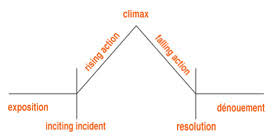What is a Prologue?
 When writing a book, there may be certain aspects that are foreign to the author, especially if they’re a first-time self-publisher. One of these is the prologue. You’ve no doubt encountered prologues before, while reading other books. Prologues are always at the onset of the novel, and they read like any other chapter, but they’re specifically set aside. In order to write fiction, self-published authors should know what a prologue is and how to master writing one. They can add a great deal to the story and hook a reader faster than a first chapter full of exposition could.
When writing a book, there may be certain aspects that are foreign to the author, especially if they’re a first-time self-publisher. One of these is the prologue. You’ve no doubt encountered prologues before, while reading other books. Prologues are always at the onset of the novel, and they read like any other chapter, but they’re specifically set aside. In order to write fiction, self-published authors should know what a prologue is and how to master writing one. They can add a great deal to the story and hook a reader faster than a first chapter full of exposition could.
Why a Prologue is important for a Novel
A prologue is a scene(s) set before the story, before the first chapter. It’s integral to the plot, however, so it must be included in the book. The prologue could be years before the events of the novel take place or it could be just weeks. The exact timing isn’t important. What is important is that whatever takes place within the prologue has a direct effect on or an importance for the rest of the novel. A random scene with no connection to the plot wouldn’t do, just like you wouldn’t put a random, unconnected scene in a regular chapter.
The prologue is necessary to set the “scene” of the novel, if you will. It introduces the narrator, characters, themes, and motifs that will be present throughout the novel. The word “prologue” comes from the Greek “prólogos,” meaning “before” (pró) and “word” (logos).
Because the prologue is set apart from the rest of the novel, it signals that it is important, so it’s crucial that the author write a worthy scene. The prologue should stand out in comparison to everything else; it should be attention-grabbing. This isn’t to say this is the climax of the story – not even close! But, it should act as a spark to set the rest of the story on fire.
How to Write a Prologue
All novels follow some sort of narrative arc. How quickly they progress through the arc is determined by the author, but the same marks are hit: exposition, rising action, climax, falling action, resolution. This is also known as Freytag’s Pyramid, after a nineteenth century German novelist noticed that there was a common pattern found among novels. He then diagrammed it as a pyramid, like so:

- Exposition: the starting point – quite literally – and the setting up of events to come.
- Inciting incident: a specific event or moment that starts the action, a moment of tension that the protagonist then sets out to resolve, in some way.
- Rising action: the build up of the action.
- Climax: the pinnacle of action, a defining moment in the novel. This is the moment everything has been leading to.
- Falling action: the fallout of the climax. The novel begins to wind to a close.
- Resolution: the protagonist reaches some sort of conclusion or figures out the problem.
- Dénouement: (day-noo-moh) a French term meaning the ending, or opposite of exposition.
So, where does the Prologue fit into Freytag’s Pyramid?
The prologue will naturally fall into the realm of exposition. It could be thought that the exposition starts because the prologue puts things into place.
Prologue Examples
A great prologue example is the one to The Canterbury Tales, by Geoffrey Chaucer:
“When April with his showers sweet with fruit
The drought of March has pierced unto the root
And bathed each vein with liquor that has power
To generate therein and sire the flower;
When Zephyr also has, with his sweet breath,
Quickened again, in every holt and heath,
The tender shoots and buds, and the young sun
Into the Ram one half his course has run,
And many little birds make melody
That sleep through all the night with open eye
(So Nature pricks them on to ramp and rage)-
Then do folk long to go on pilgrimage,
And palmers to go seeking out strange strands,
To distant shrines well known in sundry lands…”
(translated from Middle English)
This is just an example from the middle ages. Newer novels tend to use prologues differently. Newer prologues are more concrete scenes. They still introduce the novel, but in a more nuanced way.
Are Prefaces, Introductions, Forewords, and Epilogues the same as Prologues?
No. Prefaces, introductions, forewords, and prologues all have different functions in a literary work.
A preface is written by the author, and it is about the book: how it came to be, what inspired it, what the writing process was like, etc. A preface is a place for the author to present their book and the reasons it was written, essentially.
Where the preface is about the situation surrounding the book, the introduction is entirely about the content of the book. What the reader can expect to find and what’s important for them to know. This is a chance for the author to tell the reader anything they’ll need to know in order to fully understand and appreciate the book.
A foreword (not “forward”) comes before the story and is similar to an introduction, but a foreword is written by someone else, not the author of the story. This is a place for the guest writer to persuade the reader to read the book. The foreword doesn’t just tell what the story is about, but often it’ll include praise, personal anecdotes of whoever the writer is (if they’re connected to the story or the author), and any critical thoughts about the book.
An epilogue is much like a prologue, except it comes after the events of the novel.
Some authors may choose altogether to not write a prologue. There isn’t anything wrong with this choice. A prologue is just a useful tool to establish certain aspects of a literary work that the readers should know before embarking on the journey the author has written for them. Whatever choice you make, so long as it’s beneficial to the novel, is the right one.
